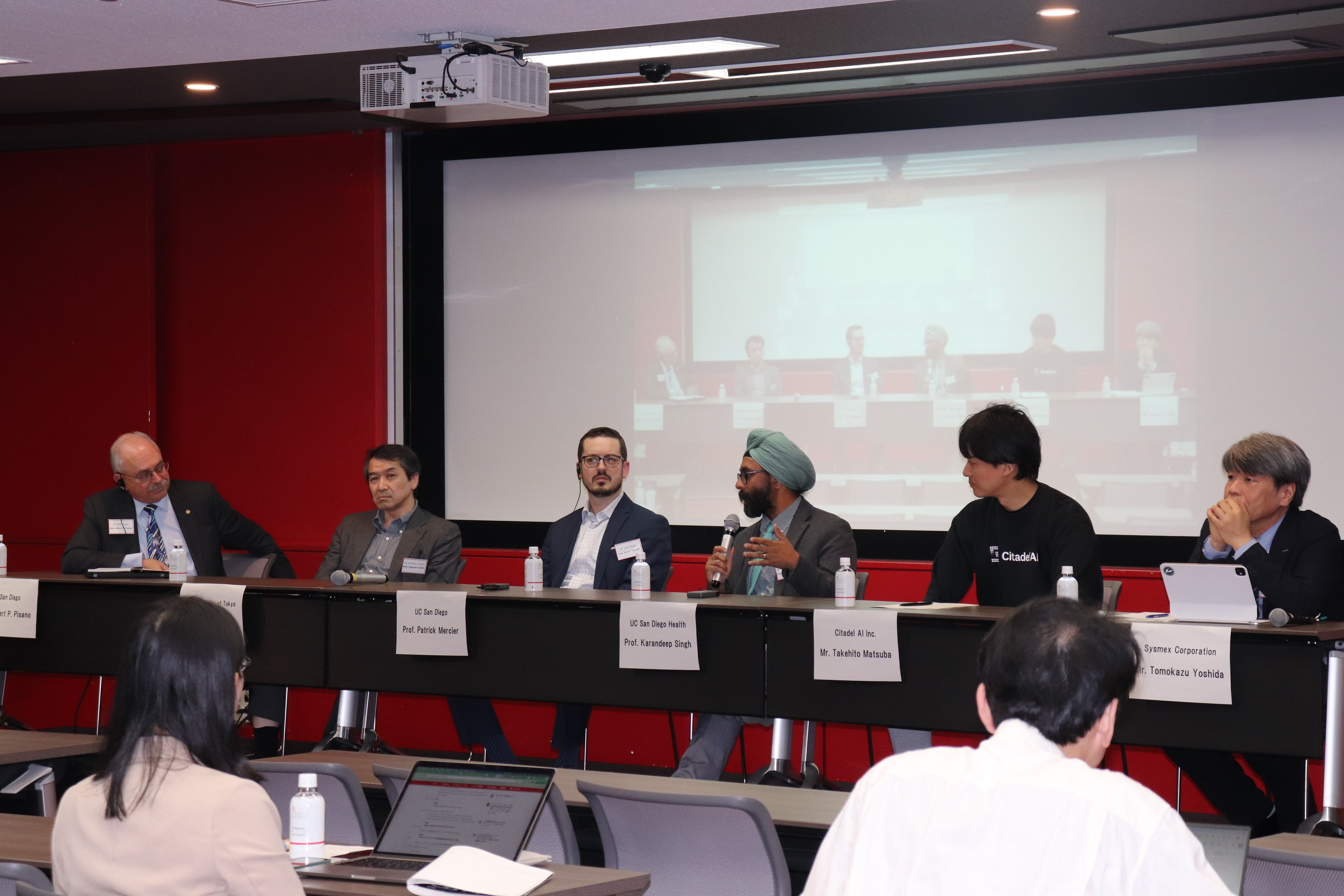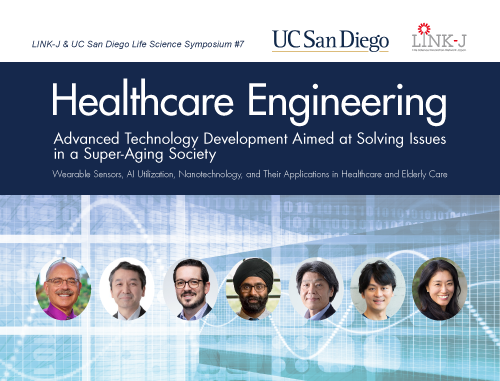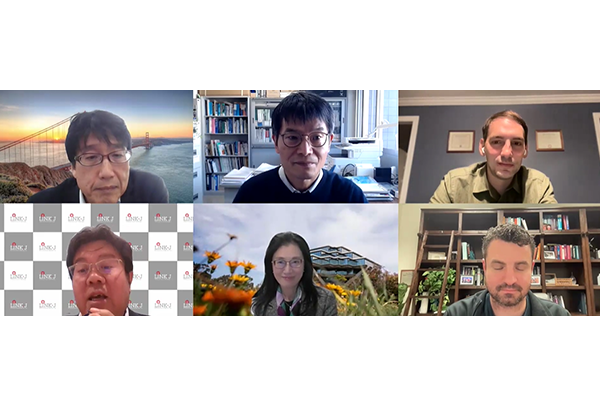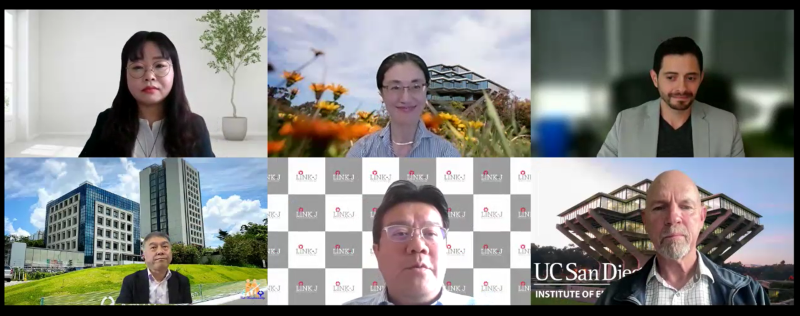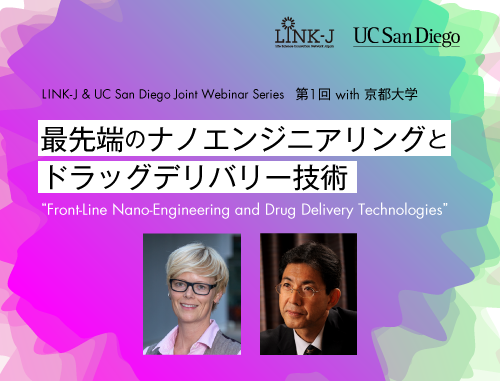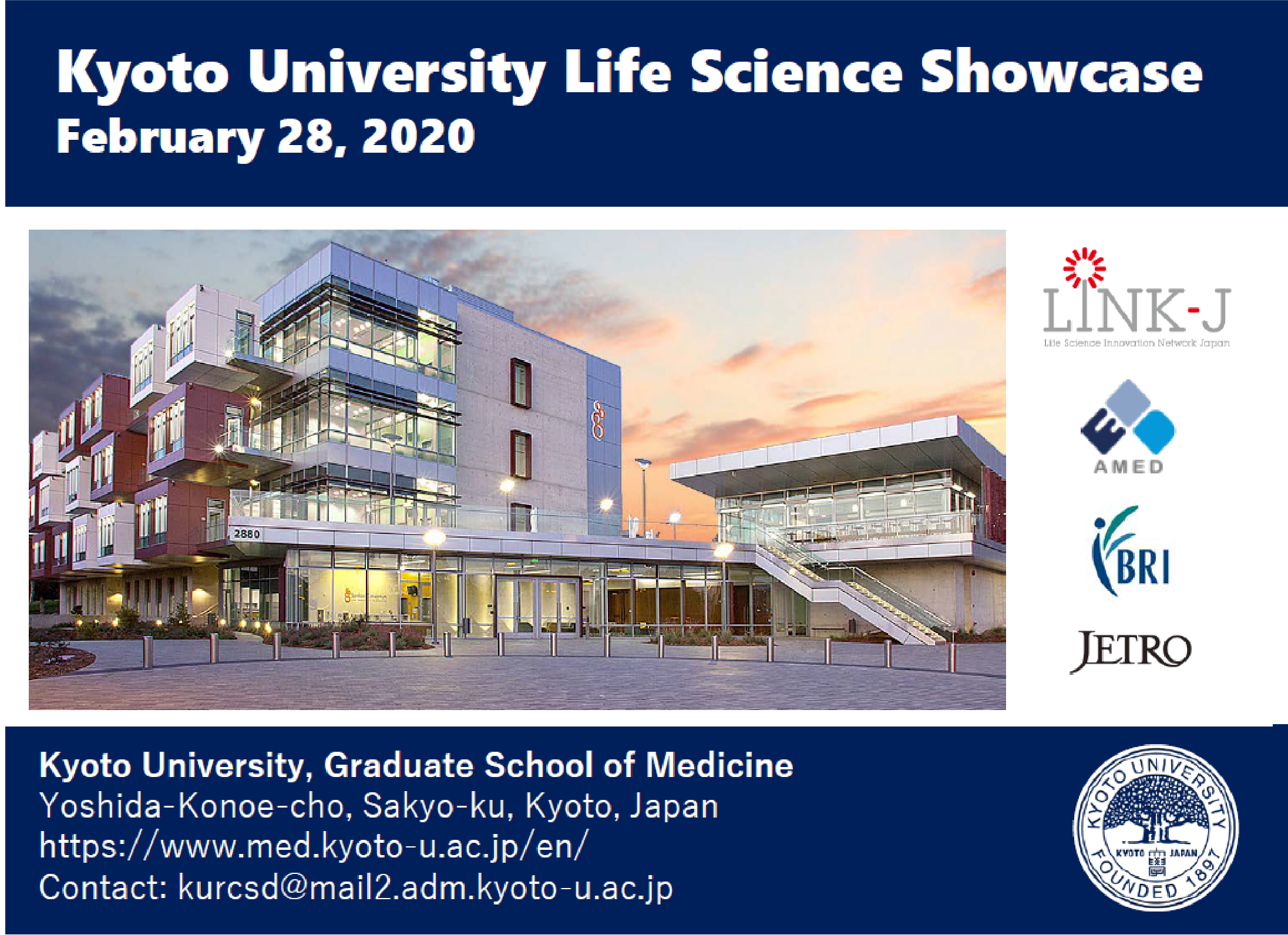
Many universities in Japan are now promoting industrial partnerships in on-campus research, including the establishment of university TLOs (Technology Licensing Organizations), industry-academia collaboration promotion organizations, and incubation facilities. Japan has improved its support and training systems for startups, including the establishment of specific funds. On the other hand, problems remain, such as the small license income from patents or intellectual properties and the limited amount of funding that can be procured domestically. In the United States, in contrast, intellectual property provides significant profits to universities, and startups receive large funding from early-stage venture capitalists. What should be done in the future to foster Japanese startups? Takashi Kiyoizumi (Angel investor and Executive Manager of UC San Diego Japan Research Center) and Masatoshi Hagiwara (Professor, Graduate School of Medicine, Kyoto University) spoke with each other about the details.
Dive in head first: Understand the actual state of entrepreneurship support through own startup businesses.
――First, please tell us about your career.
Kiyoizumi I was a plastic surgeon in a university setting at the beginning for my career. At the time, my three main responsibilities at university hospitals were clinical, research, and education. However, as I advanced my career in the hospital, there was an increase in management-related work, such as attending hospital management meetings and managing outpatient care logistics, though I did not have much experience in business management. Doctors had to manage hospital business alongside with their daily work for the patients, and the management was based on conventional practices. So, I decided to go to the United States to study the healthcare management at a business school. At that time (the 1990s), the United States was on the verge of the biotech venture era. I had the opportunity to do an internship at a bio-venture company during business school. I was fascinated by the venture business structure where venture capitals invested in research stage startups when there was neither products nor sales yet, and after graduation I took a job at a local bio-startup company in Boston. Since then, I have been worked for the biotech venture companies and as the president of a Japanese pharmaceutical company's U.S. research institute and its spinoff. I am currently an angel investor and also helping the Japan Research Center in UC San Diego.
Hagiwara I was born in medical practitioners' family in rural Mie Prefecture, and went to a local university with the intention of succeeding my father. During my undergraduate days, I had a chance to enter into a laboratory, where I had the luck of discovering a brain-circulation improvement drug. Fortunately, my graduate work also produced a therapeutic agent for preventing cerebral vasospasm after subarachnoid hemorrhage. I subsequently moved to Nagoya University then went to the Salk Institute of Biological Studies. After about eight months of postdoc days there, my research article was published in the journal "Cell". After returning to Nagoya University and serving as Assistant Professor in the Department of Anatomy, I moved to Tokyo Medical and Dental University as Professor and had a chance to initiate the Intellectual Property Division. I am currently conducting research on the treatment of hereditary diseases with original compounds that affect RNA splicing at the Department of Anatomy and Developmental Biology, Kyoto University School of Medicine.
――You both are entrepreneurs. Could you tell us more?
Kiyoizumi My interest in starting a business was inspired by my experience in internship during business school. After graduation, I decided to join a bio-venture company in order to gain management experience and learn business in a short period of time. At the time, there were many bio-ventures that could not afford to create entry level jobs, and there was a tendency to employ many people from pharmaceutical companies that had a lot of business experience. However, this company created a position for me who had no business experience. I thought this was a great opportunity and I had no choice but to join the company. Later, when I established a spin-off from a Japanese pharmaceutical company in San Diego, I used my experience to raise funding from venture capitals in Japan, the United States, and Europe, and was successfully able to take the company public on the stock exchange.
Hagiwara My creed is "Start from small things." I think it is important to experience everything for myself. When I was appointed General Manager of Intellectual Property Division at Tokyo Medical and Dental University, I decided to start a venture company, KinoPharma Inc. for myself. A clinical trial is now underway in South Korea for an antiviral compound that I have developed with KinoPharma. In addition, the clinical trials for the compound from the current research on RNA splicing is just about to be carried out. My goal as a scientist is to develop therapeutic agents to save patients suffering from incurable diseases. As large companies are reluctant to develop new drug for rare diseases which less than 100 patients suffer from worldwide, we wish to try the development of therapeutic agents for such diseases.

Surprising fact of technology transfer in the United States: Finding promising technologies before patent applications.
――Many universities in Japan are now supporting entrepreneurship by establishing incubation facilities on campus. However, compared to the United States, our performance has not proven productive yet.
Kiyoizumi Even people in the United States did not know right answers from the start. Thirty years ago, the U.S. startups also had struggles and challenges. These were gradually resolved by establishment of incubation facilities and university TLOs (Technology Licensing Offices). Universities set up TLOs to undertake patent affairs when the need arises from their faculty research. Previously, their main business was to license patents to operating companies, but they gradually expanded their support services for a startup based on the university technology, and now TLOs are playing an important role in startups based on university research.
――Some people say that Japanese universities have small income from their intellectual properties. Do you think that industry's cooperation with university TLOs is not going well?
Kiyoizumi In the United States, patent information on which universities wish to license is available on the Internet, however, most are not very attractive from a business standpoint. Where, then, are there attractive patents? In the United States, managers from operating companies regularly visit TLOs and ask TLO staff if they know ongoing promising research. In order to get promising researchers introduced, the industry managers have been building cooperative relationships with TLOs and researchers since before the patent application, and obtain a patent license at the time of the application. I feel that Japanese university TLOs have yet to build such a relationship with the industry managers.
Hagiwara Few of the people in charge of industry-academia collaboration at university have an experience in starting a business. In many cases, pharmaceutical companies have a wealth of practical experience, however, that is not consistent with the methodology of the startups. Some are trying to imitate the United States, but Japan and the U.S. have different cultures and social structures. As a result of these discrepancies, we have not achieved successful results despite the hard efforts of the parties concerned.

――What is the shortfall compared to Japan and the United States?
Kiyoizumi In the case of Japan, the history and experience of investing in startups is insufficient. In reality, there are more failures than successes in venture investment. Japan has followed the United States and established support organizations like TLOs in universities and technology incubators. However, due to its limited investment experience, Japanese investors has not fully learned from the experiences of failure and the appropriately judging risks of investments. That is why entrepreneurship and technology transfer does not see much success yet. If people really understand and accept the notion that investment in startups has the risk of losing money, we expect that the ecosystem would start going around.
Hagiwara There is also an issue of patents. It often happens that required patent styles for big pharmaceuticals and startups differ. Since the potential targets of startups are not limited to Japan, it is necessary to assess the global market. Domestic patent offices are unfamiliar with such patent application strategy. In cases of my patent applications, I always consult closely with my dear patent attorney and file the patents considering their granting in the United States and Europe. When I served as General Manager of Tokyo Medical and Dental University's Intellectual Property Division, I delved deeply into the file wrapper in the United States and even investigated the amount of settlement in patent litigations. I believe that the licensing process will be successful only if we can get enough information to properly deal with the patent.
I believe that the development of human resources is another key for licensing. Therefore, when I was at Tokyo Medical and Dental University, I hired graduate students to conduct investigations into the file wrapper. I ordered them to read through and summarize enormous amount of document from the US federal court, up to one meter tall, and published reports in patent magazines with them. The theme of reports varied from where regenerative medicine patents belong to, to expectation how to conclude the patent litigation over microarray technologies. The graduate students whom we hired at that time now play an active role in various companies and TLOs. Since then, I have made similar efforts to foster human resources.
Kiyoizumi It takes a long time for research at university to be translated into actual treatments. U.S. universities have finally reached the point where a variety of their technologies, such as those were born 30 years ago, can produce license revenues and profits. And now, they are bringing a huge amount of patent revenue to universities. We cannot expect this overnight.
――What role did incubation facilities play?
Kiyoizumi Some incubation facilities, such as JLABS, were born by chance. Johnson & Johnson built a huge San Diego lab facility, however, the Lehman crisis forced the company to cut its workforce, creating significant empty space in the lab. When they recruited tenants from startups, they found that their state-of-the-art facility, with its latest equipment, has been instrumental and has produced great successes among startups.
Hagiwara I visited the incubation facilities in the United States when they became the topic of discussion. However, I realized that all incubators were located outside of the university campuses, and that users of the incubator could not conduct experiments using isotopes and animals, which have some environmental risks. After returning to Japan, when Provost of Kyoto University appointed me to initiated its incubation facility, I designed the facility to enable users to conduct animal experiments. This is the "Innovation Hub Kyoto".
――Kyoto University has research facilities not only on campus but also at the University of California, San Diego.
Hagiwara After establishing the "Innovation Hub Kyoto", I supported the establishment of an incubation facility at University of California, San Diego, in response to a request from Professor Thomas Kipps (UCSD). At that time, I said, "We, Kyoto University would like to move into University of California's new incubation facility." Drug discovery is being made on an international scale and it is useless to think only within a domestic market in Japan. By establishing on-site laboratories in the United States, we hope to bring Japan's advanced technologies and seeds into the U.S. on our own initiative and accelerate drug discovery there.

Harsh VC investment situation in the United States: Even the founder could be fired.
――I heard that VCs in the United States supply human resources in addition to funding. What is the actual situation?
Kiyoizumi VCs in the United States introduce and supply human resources to startups they invest in as needed. However, this approach is extremely severe. Their goal is to earn as much as possible from their investments and provide good returns to their investors. VCs that cannot do so cannot survive in the industry. In addition, the time to cash out is usually short (10 years or less). Whether it is founder or chief executive officer, therefore, the board of directors will relentlessly demand the removal or replacement, if they deem it necessary. It is important to know that VCs can raise money in the United States far more than in Japan, and that is a big advantage.
Hagiwara The qualities required for scientists and managers differ. I understand what you mentioned. That is why I stepped out from management at KinoPharma Inc. as it has moved forward from the early stage. However, it is true that the methodology of U.S. VCs, who mercilessly replace even the founding members, is a little difficult to accept from the perspective of Japanese values. As the saying goes, "When in Rome, do as the Romans do," we will take on the challenge of drug discovery under U.S. business norms when we enter the U.S. market. Our entrepreneurial goal is to bring as many new therapeutics to patients as possible. What we need to do is to secure funding for the development of the next therapeutic agent and to launch the drug we have developed. If these two objectives can be achieved, we will not ask for much.
――Should it be a trade-off between raising large amounts of capital from VCs in the United States and VC's intervention in corporate management?
Kiyoizumi Indeed. Thirty years ago, when I started my business career in the United States, both the VCs and entrepreneurs were motivated to work hard together. However, the number of VCs has increased, and the amount of money flowing into the VC market continues to increase. There are many VCs who have only little experience in venture investments, and young people with MBA degrees may come to the VC world after having dabbled a bit in the financial industry. Though they have a wealth of financial knowledge, they leave technical evaluation to the advisors. As a result, conflicts may arise between management teams and the VC investors.
Hagiwara I also experienced the current situation in the United States, and I think it is better to know their methodology. However, I think it is necessary to calmly assess what Japan's strengths are, rather than copying the U.S. approaches. For example, although I, myself, have retired from the management of KinoPharma Inc, CEO of the company at that time is still active as a board member today, 17 years after its founding. The founding members grew together with the company, and the stage of the company advanced. I believe this approach is ideal for Japanese startups.

Assist in advantage of the "strengths" of Japanese people: Our role of connecting people.
――Finally, what are your expectations for LINK-J?
Kiyoizumi Due to the COVID-19 pandemic, it has been difficult for people to interact with each other. However, LINK-J actively holds webinars, and I believe that LINK-J plays a catalytic role in the life science community. One of the issues that has been pointed out with incubation facilities in Japan is that there is little interaction between tenants even though they work in the same building. I expect that LINK-J will play a role in this area as well, acting as an intermediary to create a positive exchange.
Hagiwara I would like to ask for support measures that take advantage of the Japanese strengths. The Mitsui Group has a general trading company (Mitsui & Co.), so I would like to focus on its power to formulate strategies based on information from around the world. There is a lot of concern lately about the impact of budget cuts at national universities. I would like to see this trend change from the industry. How do LINK-J connect academia and industries, and develop intellectual-intensive industries? I look forward to seeing LINK-J's global perspective in action.
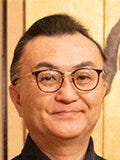 Takashi Kiyoizumi, M.D., Ph.D.
Takashi Kiyoizumi, M.D., Ph.D. Graduated from Keio University School of Medicine. After serving as Assistant Professor for the Department of Plastic and Reconstructive Surgery at Keio University and as a surgical fellow at Harvard Medical School, he obtained his Master of Business Administration degree from the Sloan School of Management, Massachusetts Institute of Technology. In 2000, he was appointed as President of Mitsubishi Tanabe Pharma Corporation's U.S. affiliate, and the following year he became CEO of Medicinova. He is currently an angel investor, Managing Director of Kiyoizumi Advisory LLC, and Executive Manager of Japan Forum for Innovation and Technology at the UC San Diego.
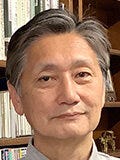 Masatoshi Hagiwara, M.D., Ph.D. Professor
Masatoshi Hagiwara, M.D., Ph.D. Professor Graduated from Mie University School of Medicine. After graduation, he became Assistant Professor for the Department of Pharmacology, Nagoya University School of Medicine. Studied at the Salk Institute for Biological Studies in 1991. When he returned to Japan in 1993, he started his own laboratory in Nagoya University School of Medicine as Assistant Professor. He moved to Tokyo in 1997 as Professor of Medical Research Institute of Tokyo Medical and Dental University. He moved from Tokyo to Kyoto University in 2010 as Professor and Chairman of Department of Anatomy and Developmental Biology in the Kyoto University Graduate School of Medicine. He is now interested in splicing code of pre-mRNA and developing chemical compounds for new therapeutics of congenital diseases.
